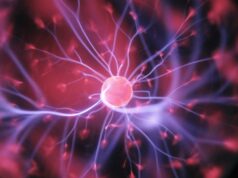
Directional deep brain stimulation (DBS) has demonstrated benefits over omnidirectional DBS for the treatment of Parkinson’s disease in the largest prospective study in this space to date—with the former also being preferred by patients and clinicians alike. The findings of this study have been published in the peer-reviewed medical journal Neuromodulation: Technology at the Neural Interface.
The international crossover study, the results of which are authored by Alfons Schnitzler (University Hospital of Düsseldorf, Düsseldorf, Germany) et al, assessed the therapeutic window (TW)—an endpoint used to describe the range of stimulation amplitudes achieving symptom relief without side effects—associated with both types of DBS.
“In the largest prospective study of STN [subthalamic nucleus] DBS for Parkinson’s disease to date, 90.6% of subjects had a wider TW using directional stimulation of the STN compared to omnidirectional stimulation,” Schnitzler et al write. “The double-blind randomised comparison showed that directional stimulation achieves a superior TW compared to conventional omnidirectional stimulation. TW was increased by an average of 41% using directional stimulation, and directional contacts could be selected depending on treatment goals, either to reduce the amplitude required to relieve symptoms or to increase the threshold for side effects.
“Blinded motor examination showed similar improvements in motor score with omnidirectional and directional stimulation of the STN. Disease-specific quality of life was also significantly improved with DBS. Approximately 20% of clinicians and subjects had no preference for stimulation paradigm, but of those who expressed a preference, twice as many subjects and three times as many clinicians preferred directional stimulation.”
According to the study’s authors, published reports on directional DBS have, thus far, been limited to small, single centre investigations and, as such, they conducted the PROGRESS (Postmarket clinical follow-up evaluating the Infinity deep brain stimulation implantable pulse generator system) study—a randomised double-blind assessment of a large patient cohort to determine whether a wider TW could be achieved with directional STN DBS compared to omnidirectional DBS STN delivered by the same lead.
Eligible patients, Schnitzler et al add, had levodopa-responsive Parkinson’s disease and were scheduled to receive, or had already received, a bilateral DBS system with directional leads implanted in the STN (Infinity DBS System, Abbott). The study enrolled a total of 234 patients (62±8 years, 33% female) between January 2017 and January 2019 at 37 sites in Europe, the USA, and Australia.
Participants received omnidirectional stimulation for the first three months after initial study programming, followed by directional DBS for the subsequent three months. The primary endpoint was an evaluation of TW for the two stimulation types at three months after initial study programming. Additional data recorded at three- and six-month follow-ups included stimulation preference, therapeutic current strength, Unified Parkinson’s Disease Rating Scale (UPDRS) part III motor score, and quality of life.
The report’s authors detail that TW was wider using directional stimulation in 183 of the 202 subjects for which they held complete primary endpoint data (90.6%), and the mean increase in TW with directional stimulation was 41% (2.98±1.38mA, compared to 2.11±1.33mA for omnidirectional stimulation). There were no significant differences in UPDRS motor examination score at three months compared to six months, while an improved quality of life—measured using the Parkinson’s Disease Questionnaire (PDQ-39) summary index—from baseline (31.6±16.2) to three months (25.8±15.1) and six months (24.4±14.2) was observed, with all eight components of PDQ-39 improving at six months, and only communication showing “no significant change” at three months.
After six months, during which subjects were blinded to stimulation type, 102 of 193 subjects (52.8%) preferred the three-month period when directional stimulation was used, compared to 50 (25.9%) who preferred the first three months when omnidirectional stimulation was used, Schnitzler et al write. Forty-one subjects (21.2%) expressed no preference. In addition, clinicians preferred the period of directional stimulation for 113 of 193 subjects (58.5%)—citing that their preferences were based on symptom relief in 96 subjects and side effect avoidance in 11. The period with omnidirectional stimulation was preferred by clinicians for 41 subjects (21.2%), and there was no preference for 39 (20.2%).
Finally, using the contact with lowest therapeutic current strength, directional stimulation was found to be able to reduce the current required to achieve symptom relief by 39% (1.11±1.00mA) compared to omnidirectional stimulation (1.83±1.52mA)—a trend that held true across participants whose devices were implanted both before and after enrolment in the study. Regarding complications during the study, the authors add that no intracranial haemorrhages or infections were reported, and there were 11 serious adverse events (0.05 per subject) related to a DBS device, procedure or stimulation, and 34 non-serious device-related events (0.14 per subject).
“In conclusion, this large prospective study found that directional stimulation could achieve a superior TW compared to conventional omnidirectional stimulation, and was preferred by blinded subjects and clinicians,” Schnitzler et al state in their report. “Further investigation will be needed to determine whether wider TW predicts improved long-term clinical outcomes of DBS.”













